Double Plossel Eyepiece Spectroscope
Ones of most important parts of spectroscope are a colimating lens and a imaging lens. CCD spectroscopy is to get a spectrum image on CCD, so imaging lenses are demanded no coma and distortion. Then, Plossels eyepiece would be better for that, and let's chech the potential.
Fist of all, see the component of Plossel eyepiece.
It is consisted of two lenes, and each lens is symmmetry and achromatic. Therefore, it is no matter which way ray trace goes into the lens.
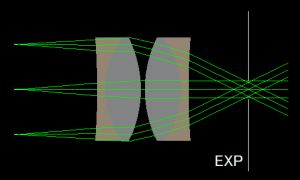 Ray diagram of Plossel eyepiece
Ray diagram of Plossel eyepiece
Three rays crosses at a point, so-called external pupil.
Let's see its spot diagram with Fno=8 stop.
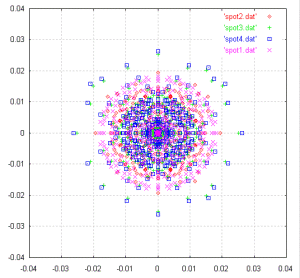
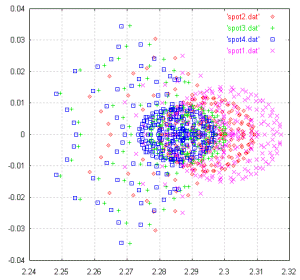 Spot diagram
Spot diagram
It looks fine.
I have a 32mm Plossel eyepiece, and took an image.
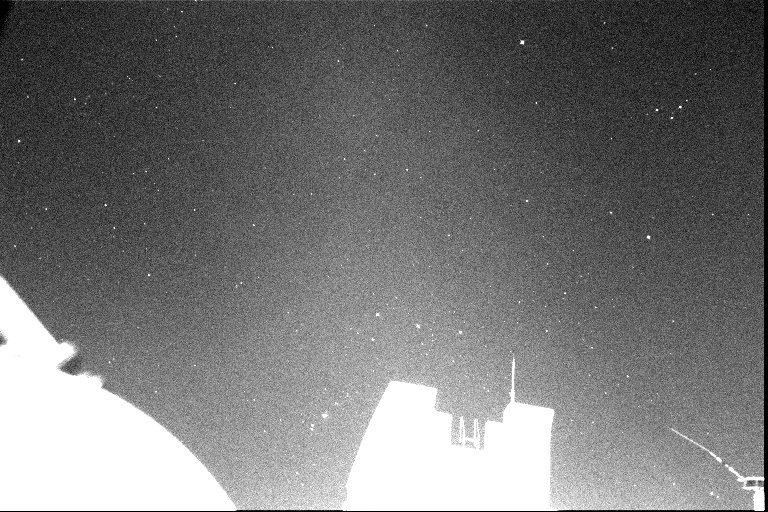 Image taken with Meade PL32mm and CCD camera
Image taken with Meade PL32mm and CCD camera
It looks very good. I used this eyepiece for spectroscope like upper ray diagram.
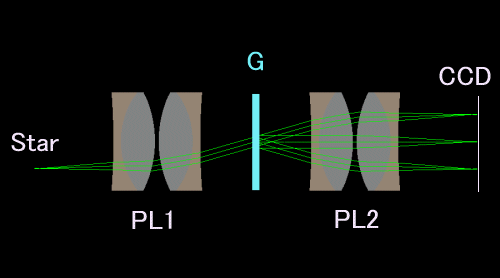 Ray diagram of spectroscope with double Plossel eyepiece
Ray diagram of spectroscope with double Plossel eyepiece
The merits of using double PL eyepiece are,
no distortion because of symmetry lay-out,
cheaper cost,
less coma, and
easy to build it up.
This spectroscope is equiped with CCD camera like lower image.
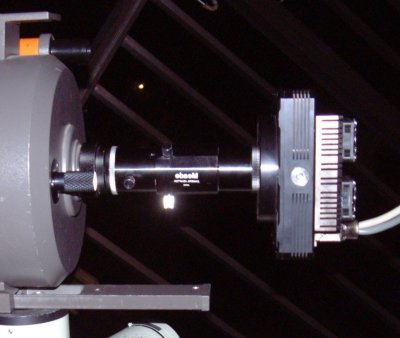
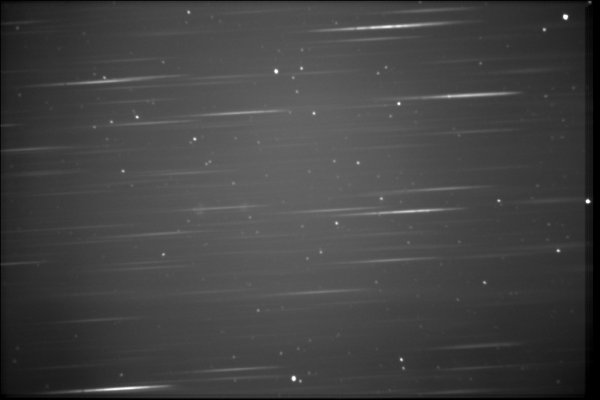 Spectrum Image
Spectrum Image
Using grating, the image has two kinds of images, 0th and 1st order spectrum. Stars of 0th order image are enough sharp, and the observed area is wider.
Observaions
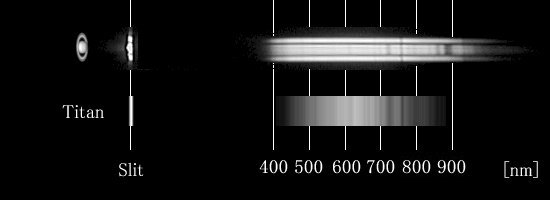 Satrun and Titan
Satrun and Titan
The deeper absorption at 760nm is caused by Earth atmosphere's Oxygen molecule, which can be used as a calibration for wavelength. Two absorption at 720 and 890nm, methan, are appeared in Saturn and Titan, but its rign does not have them.
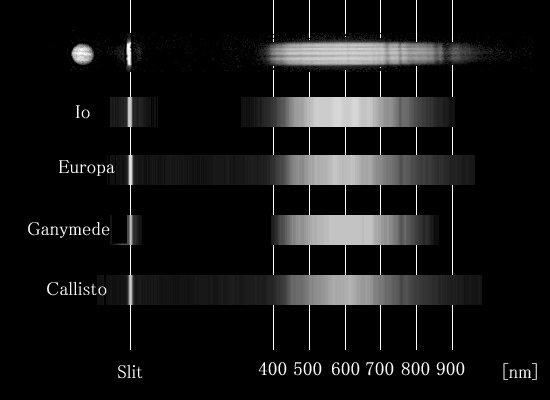 Jupiter and its four big moons.
Jupiter and its four big moons.
Jupiter has methan absorption as well as Saturn, but four Galileo satellites do not have one.
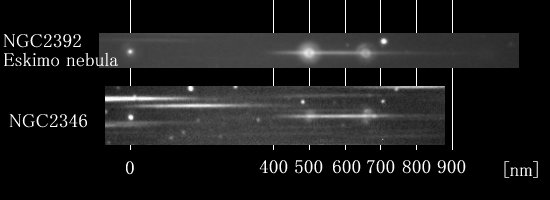 Planetary nebulae
Planetary nebulae
Planetary nebulae show two bright emission lines, NII and OIII. Eskimo nebula's OIII is much stronger than NII. On the other hand, NGC2364's NII is stronger slighty than OIII.
February 13th, 2002 originally( Japanese )
June 5th, 2002 ( English )
Astronomy
TOP
mail










